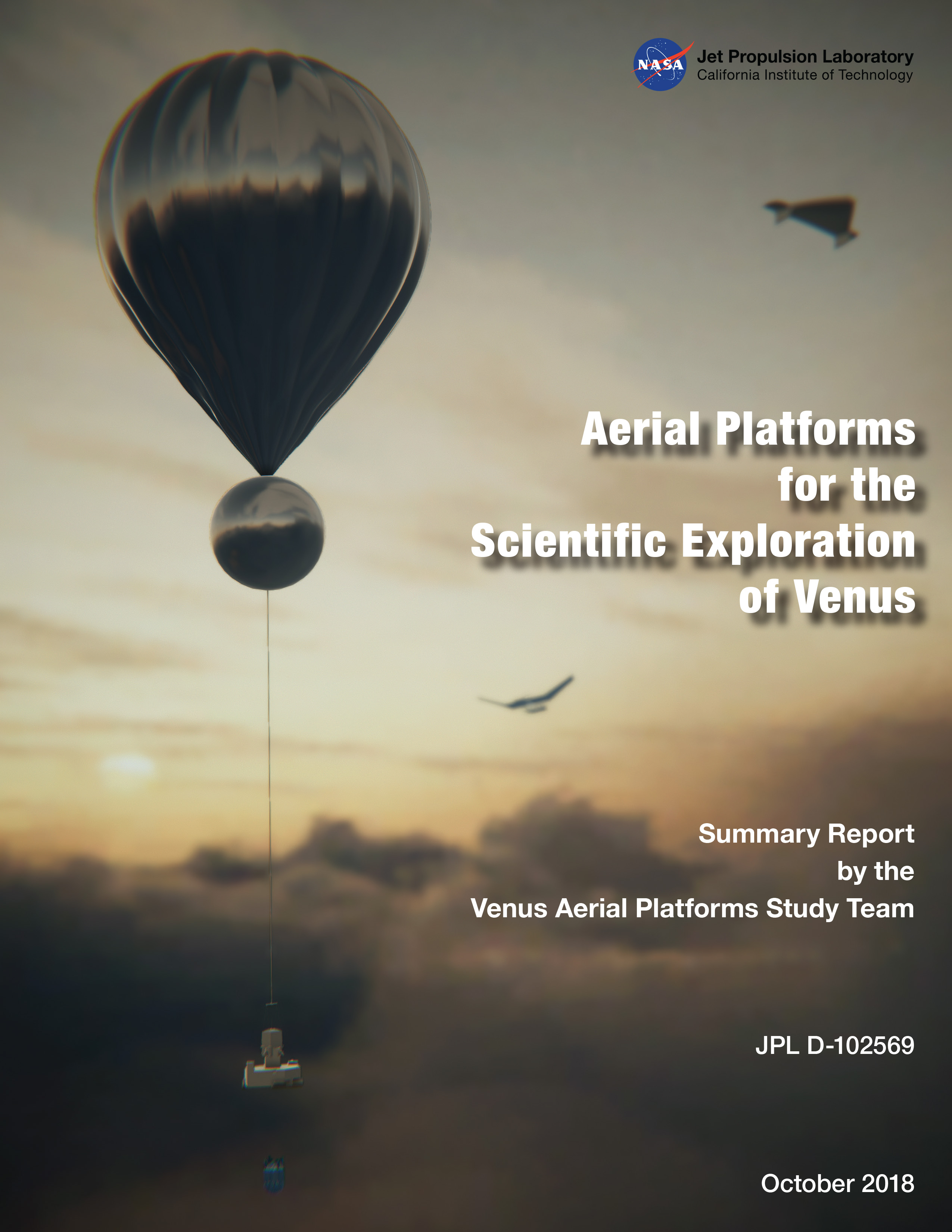Aerial Platforms for the Scientific Exploration of Venus

| Credit | NASA/JPL-Caltech |
|---|---|
| Language |
|
In 1985, two balloons were inserted into the atmosphere as elements of the Venus-Halley (VeGa) mission, the last mission to Venus conducted by the Soviet Union. In two Earth days, each balloon travelled approximately 11,500 km in the superrotating winds at an altitude of about 54 km, tracked by a global array of twenty radio observatories. Observations by instruments on the balloons and from radio tracking of their motion provided unique information on the circulation of the Venus atmosphere.
Now, almost 35 years later, the time is ripe to resume the exploration of Venus by once again deploying aerial platforms that can investigate the Venus environment in situ, yet avoid the extreme temperatures of the surface. Aerial platforms much more capable than the VeGa balloons can now be designed to be equipped not only to investigate the structure of the atmosphere and its circulation, but also to determine the chemical nature of the gaseous atmosphere and the Venus clouds. A platform high can also be used to investigate the surface and interior in a way that is neither possible from orbit, nor from short duration landed missions feasible with current technology.
The Venus Aerial Platforms study involved 52 participants with expertise in Venus science, planetary mission engineering, and aerial platform technology. A process developed by the Keck Institute for Space Studies (KISS) was used to perform the study, which was conducted at the KISS conference facilities at Caltech. A range of possible Venus aerial platform concepts were considered and evaluated with a methodology which included the merits of the science that could be performed, the size and complexity of the platform, and the maturity of the technology.
We would like to thank all the participants in the study for the commitment of their time and creative efforts at the study’s two face-to-face meetings and for their continuing engagement through the completion of this report. We would also like to thank Prof. Tom Prince, Director, and Michele Judd, Executive Director, for permission to use the KISS facilities for this study. The support of Dr. Adriana Ocampo, Program Executive for Venus Studies, and Dr. James L. Green, Director of the Planetary Science Division, at the inception of the study, and now NASA Chief Scientist, provided the impetus and resources for carrying out the study. Finally, we would like to acknowledge Dr. Lori Glaze for her leadership as a study participant and her continued support since becoming Acting Director of the Planetary Science Division at NASA.
James A. Cutts
Larry H. Matthies
Thomas W. Thompson
Co-leaders of the Venus Aerial Platforms Study
JPL D‐102569
